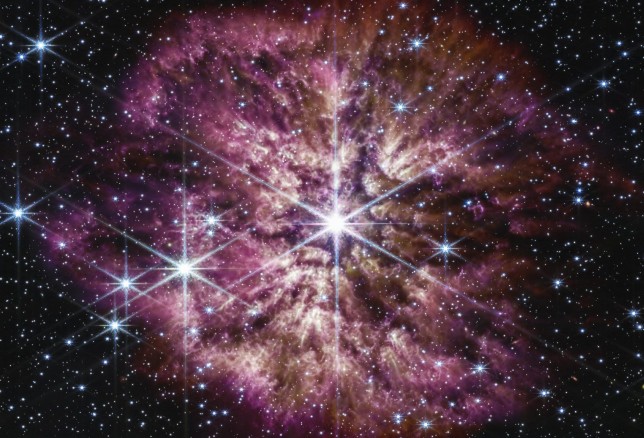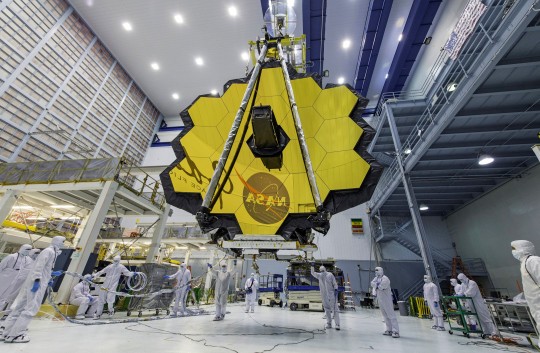Nasa’s James Webb telescope captured a rare picture of the moments leading up to a supernova.
A Wolf-Rayet star, one of the most luminous, massive, and briefly detectable stars was one of the first observations made by the $9 billion telescope in June 2022.
Webb shows the star, WR 124, in unprecedented detail with its powerful infrared instruments.
The star is also 30 times the mass of the Sun and has shed 10 Suns’ worth of material so far, according to Nasa.
WR 124 is 15,000 light-years away in the constellation Sagittarius.
‘Wolf-Rayet stars are in the process of casting off their outer layers, resulting in their characteristic halos of gas and dust,’ said Nasa in a statement.
‘As the ejected gas moves away from the star and cools, cosmic dust forms and glows in the infrared light detectable by Webb,’
Only some stars go through a brief Wolf-Rayet phase before going supernova, making Webb’s detailed observations of this rare phase valuable to astronomers.
The origin of cosmic dust that can survive a supernova blast and contribute to the universe’s overall ‘dust budget’ is of great interest to astronomers for multiple reasons.
Dust is integral to the workings of the universe as it shelters forming stars, gathers together to help form planets, and serves as a platform for molecules to form and clump together – including the building blocks of life on Earth.
Despite the many essential roles that dust plays, there is still more dust in the universe than astronomers’ current dust-formation theories can explain. The universe is operating with a dust budget surplus.
Webb opens up new possibilities for studying details in cosmic dust, which is best observed in infrared wavelengths of light.
The telescope’s Mid-Infrared Instrument (MIRI) reveals the clumpy structure of the gas and dust nebula of the ejected material now surrounding the star.
Before Webb, dust-loving astronomers simply did not have enough detailed information to explore questions of dust production in environments like WR 124.
What is a supernova?
A supernova is a powerful and luminous stellar explosion. It occurs during the last evolutionary stages of a massive star.
It is the biggest explosion that humans have ever seen. Each blast is the extremely bright, super-powerful explosion of a star.
Stars like WR 124 also help astronomers understand a crucial period in the early history of the universe.
Similar dying stars first seeded the young universe with heavy elements forged in their cores. These elements are now common in the current era, including on Earth.
Webb’s detailed image of WR 124 preserves forever a brief, turbulent time of transformation, and promises future discoveries that will reveal the long-shrouded mysteries of cosmic dust.
MORE : James Webb Space Telescope spots first alien planet – and it’s similar to Earth












